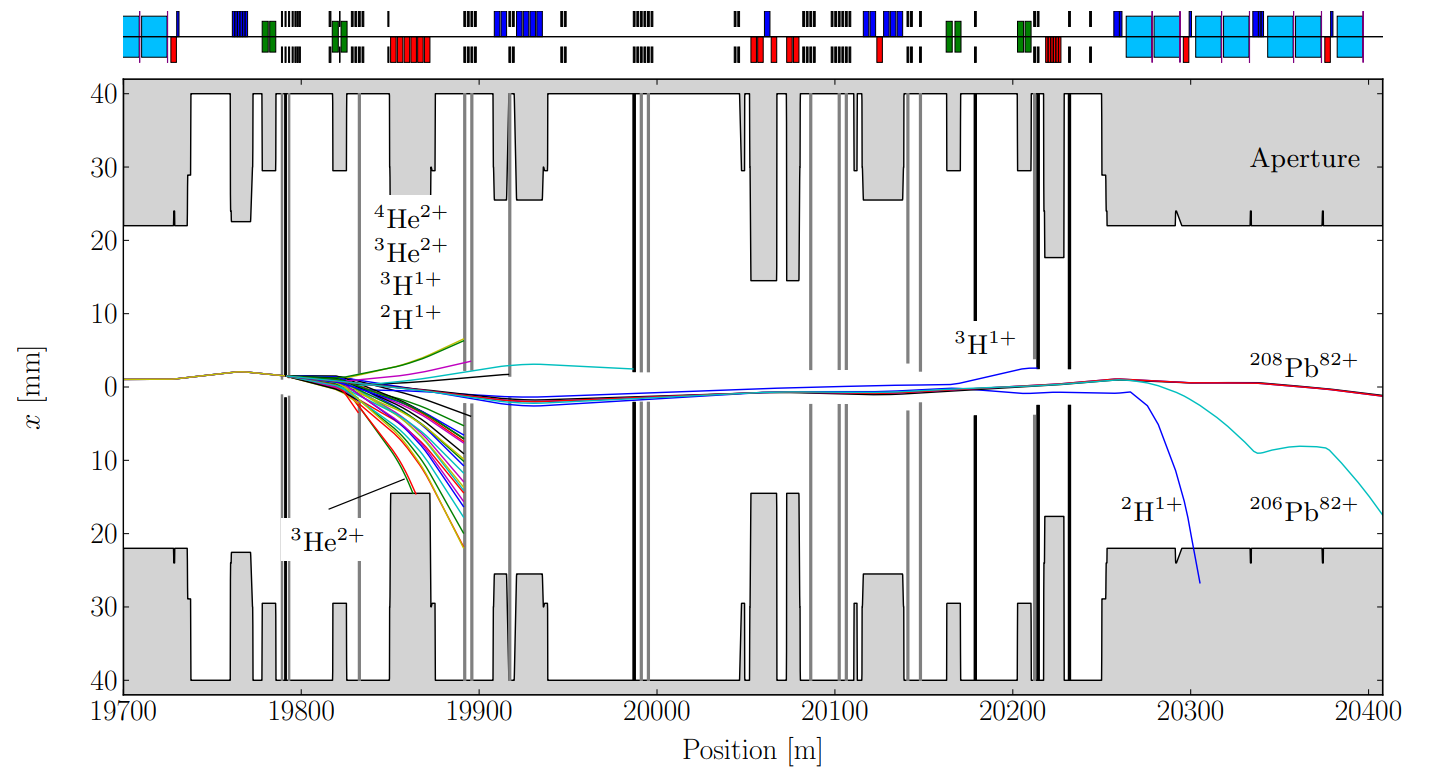Heavy-ion collimation
With the hierarchical design of the LHC collimation system, the collimation cleaning efficiency depends on the scattering of hadrons from the primary to the retracted secondary collimators. While this concept works well for proton beams, reaching cleaning efficiencies of 99.9999% (or cleaning inefficiencies of 10^{-4}), heavy-ion beam collimation suffers from the fact that nuclear and electromagnetic interactions heavy ions undergo in the collimators can lead to fragmentation into other atomic nuclei. These fragments, which signficiantly different mass-to-charge ratio from the main beam, can leave the collimation system and reach the superconducting magnets of the dispersion suppressor where they are subject to strong magnetic fields of up to 8.3T in the LHC. This magnetic field acts as a spectrometer and diverts the particles to amplitudes so large that they ultimately hit the magnet aperture, where their energy is deposited, ultimately risking them to quench. The collimation cleaning inefficiency for heavy ion beams is higher by two orders of magnitude compared to proton beams.

Fig. 1: Simulated fragmentation of Pb ions and subsequent motion of fragments in the LHC magnets
The theoretical understanding of heavy-ion collimation in simulations depends on
- The simulation of the fragmentation processes in the collimator material,
- An accurate tracking of the subsequent motion of the fragments in the magnetic system of the accelerator to identify the loss location of the fragments.
Fig. 1 illustrates the fragmenation of Pb ions in the LHC primary collimators and the motion of the fragments. Dedicated simulation software is necessary to optimize the collimation system performance in heavy-ion operation and develop particle loss mitigation strategies. The current standard tool to simulate the collimation cleaning inefficiency with heavy-ion beams is the SixTrack-FLUKA coupling.
Relevant references
N. Fuster-Martinez et. al, Simulations of heavy-ion halo collimation at the CERN Large Hadron Collider: Benchmark with measurements and cleaning performance evaluation. Phys. Rev. Accel. Beams 23, 111002, 2020 - Published 6 November 2020
P. Hermes, Heavy-Ion Collimation at the Large Hadron Collider : Simulations and Measurements. University of Münster, Germany. CERN-THESIS-2016-230, 2016.